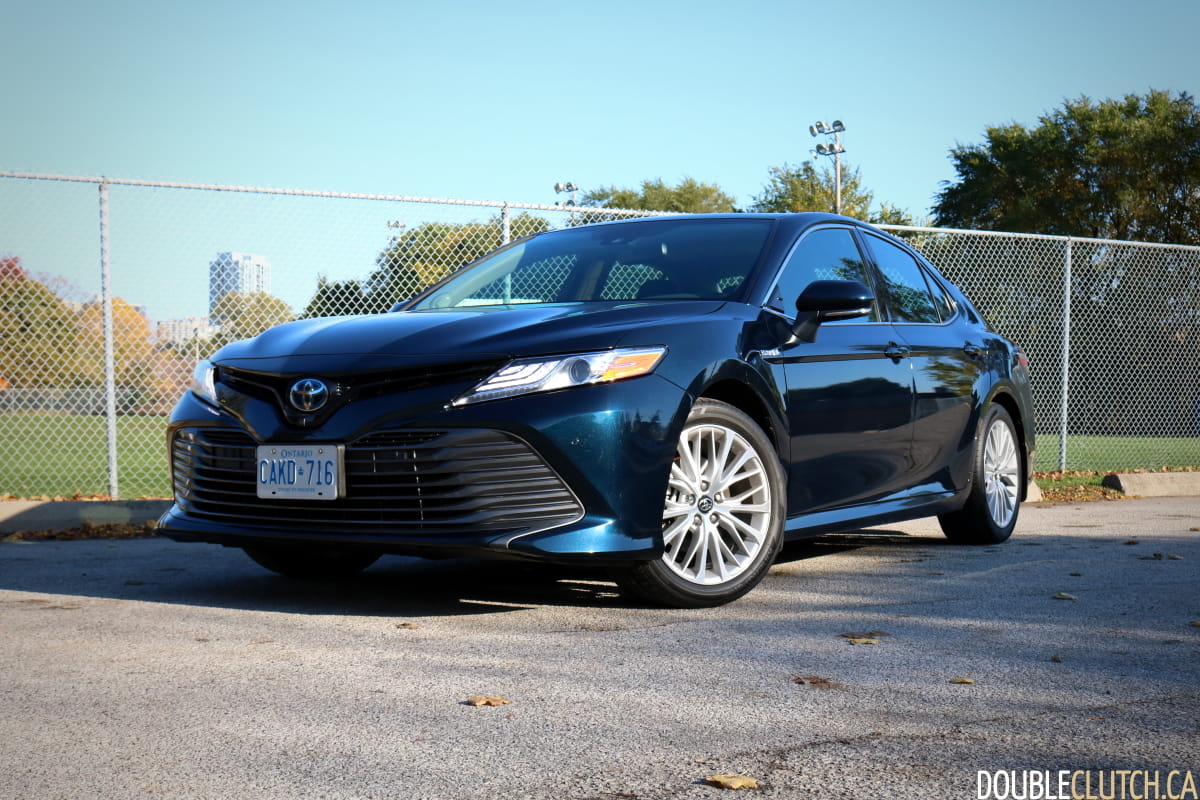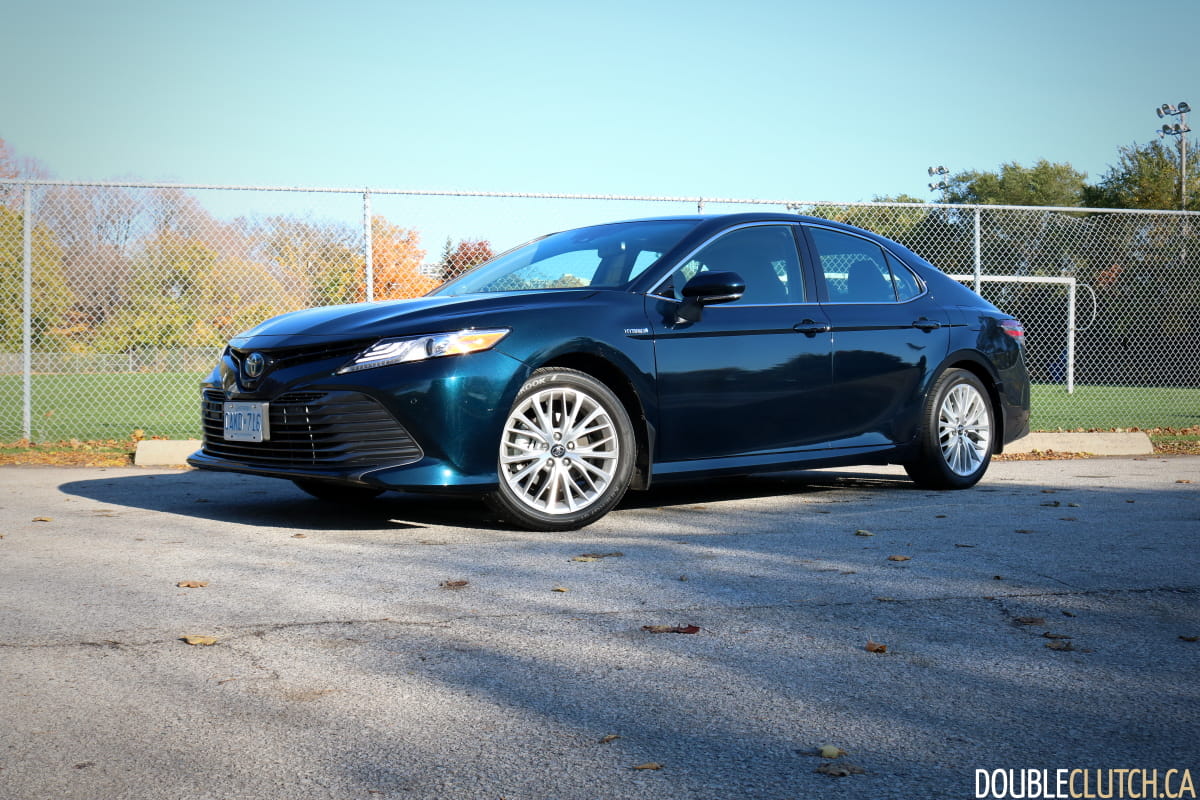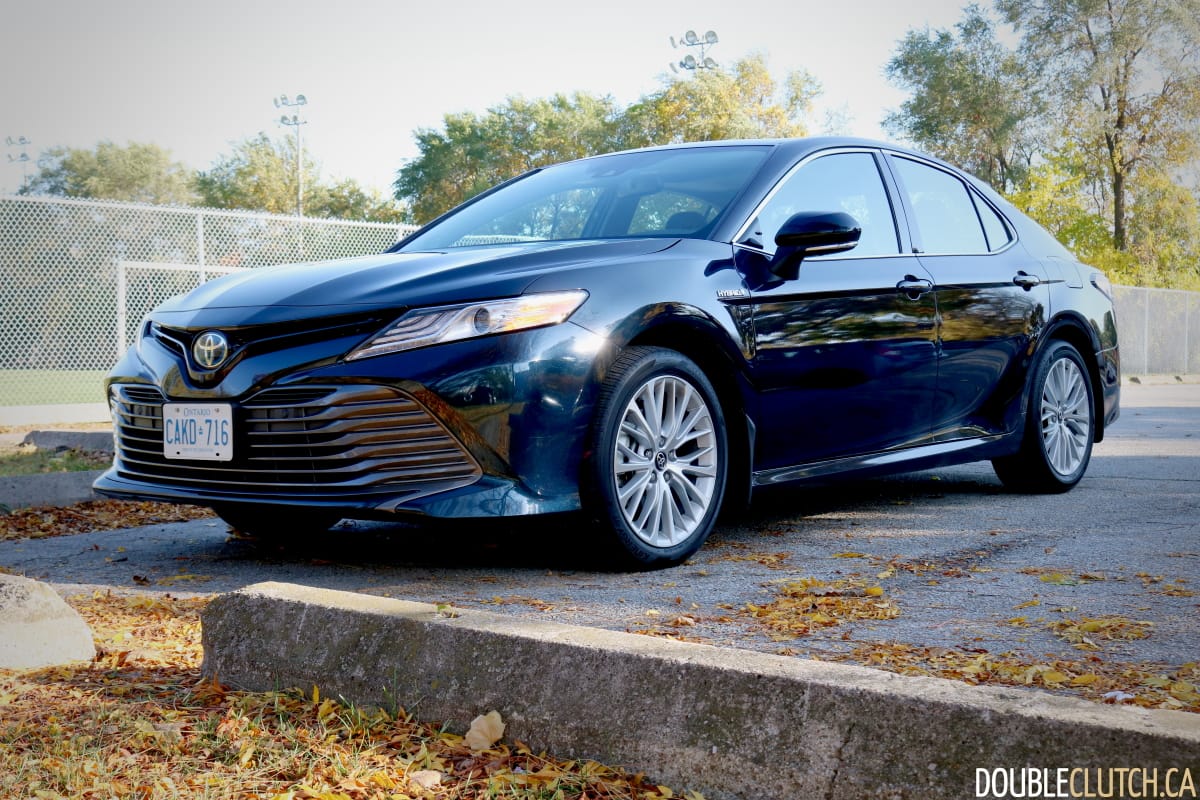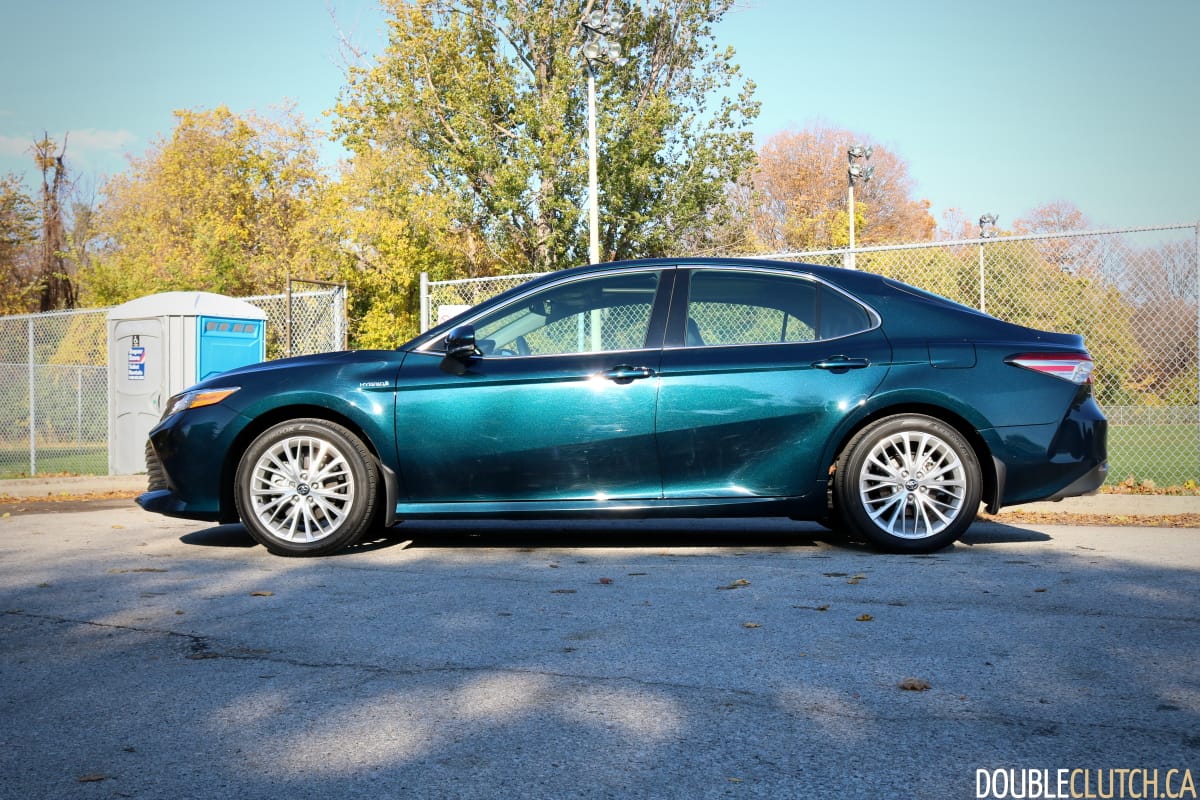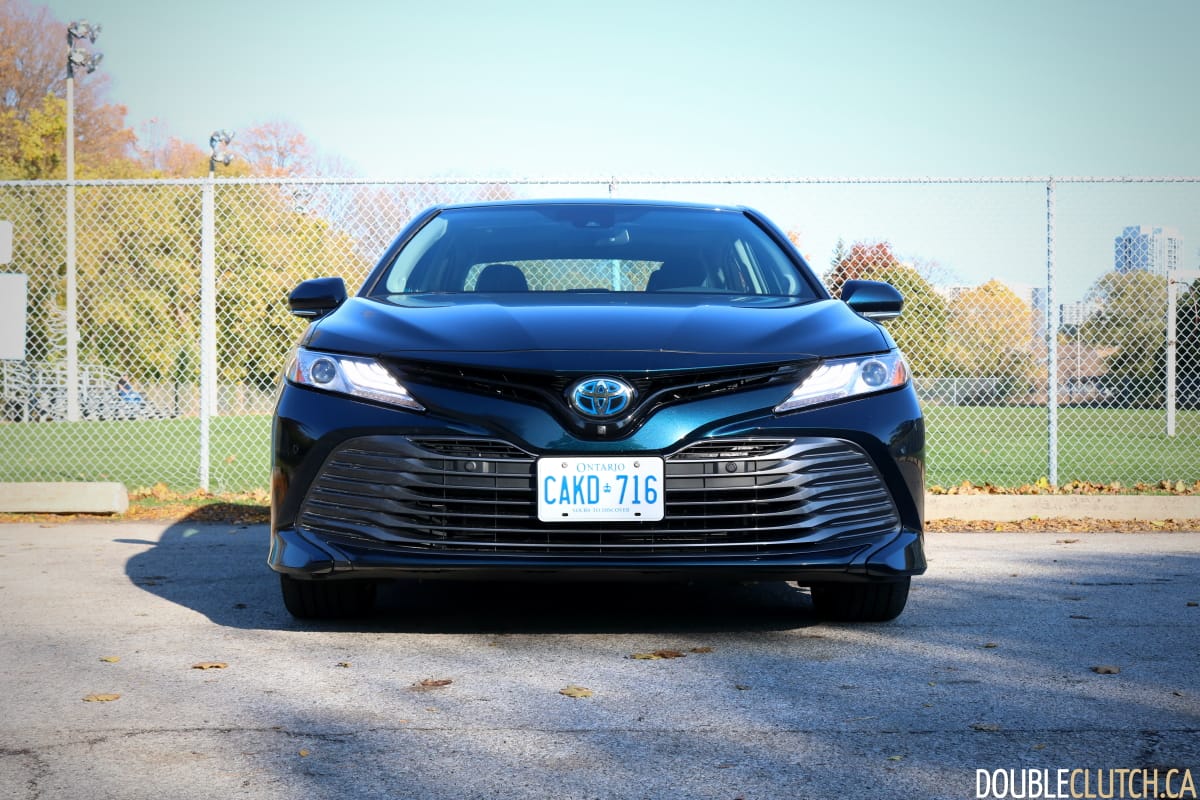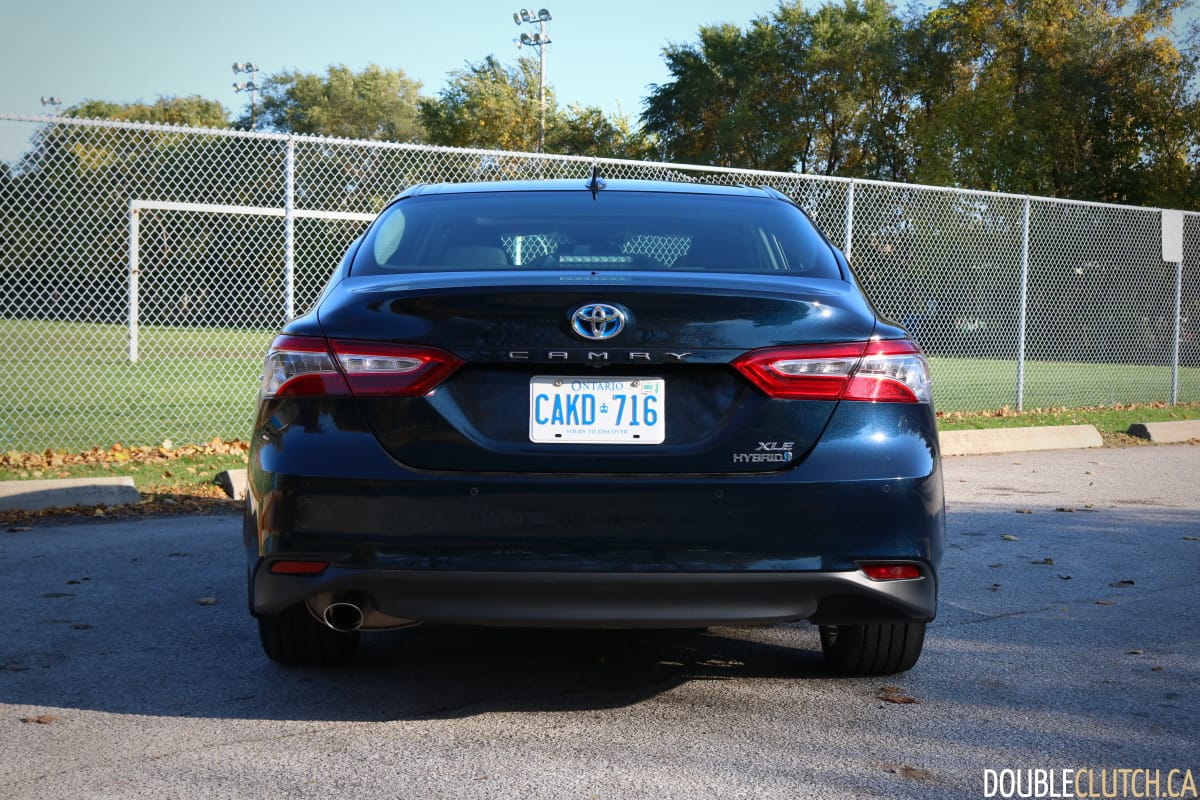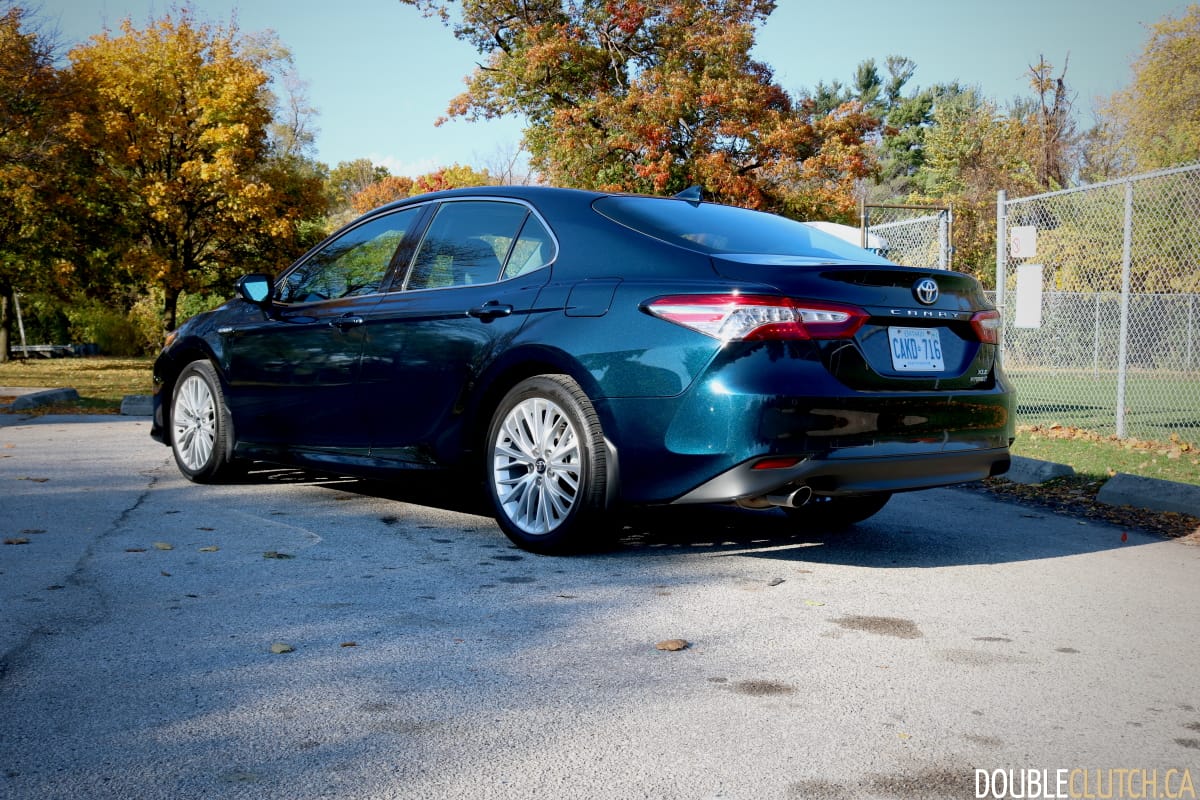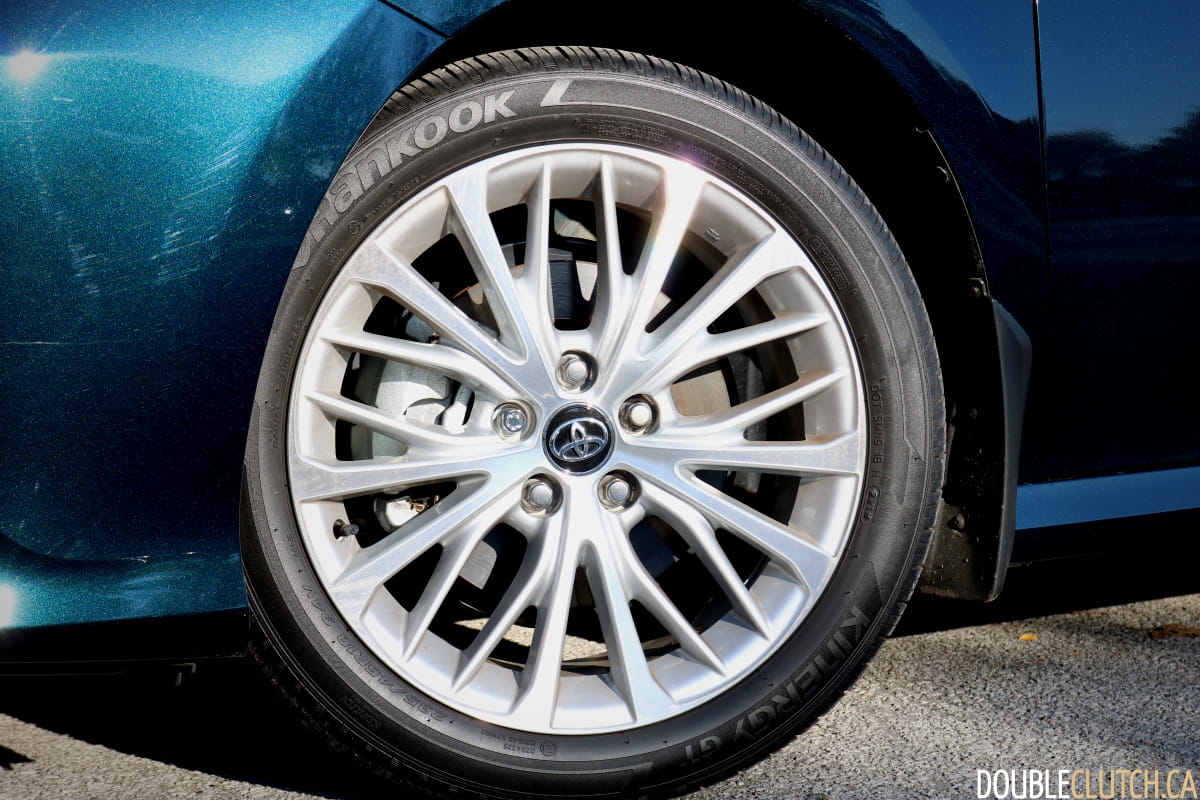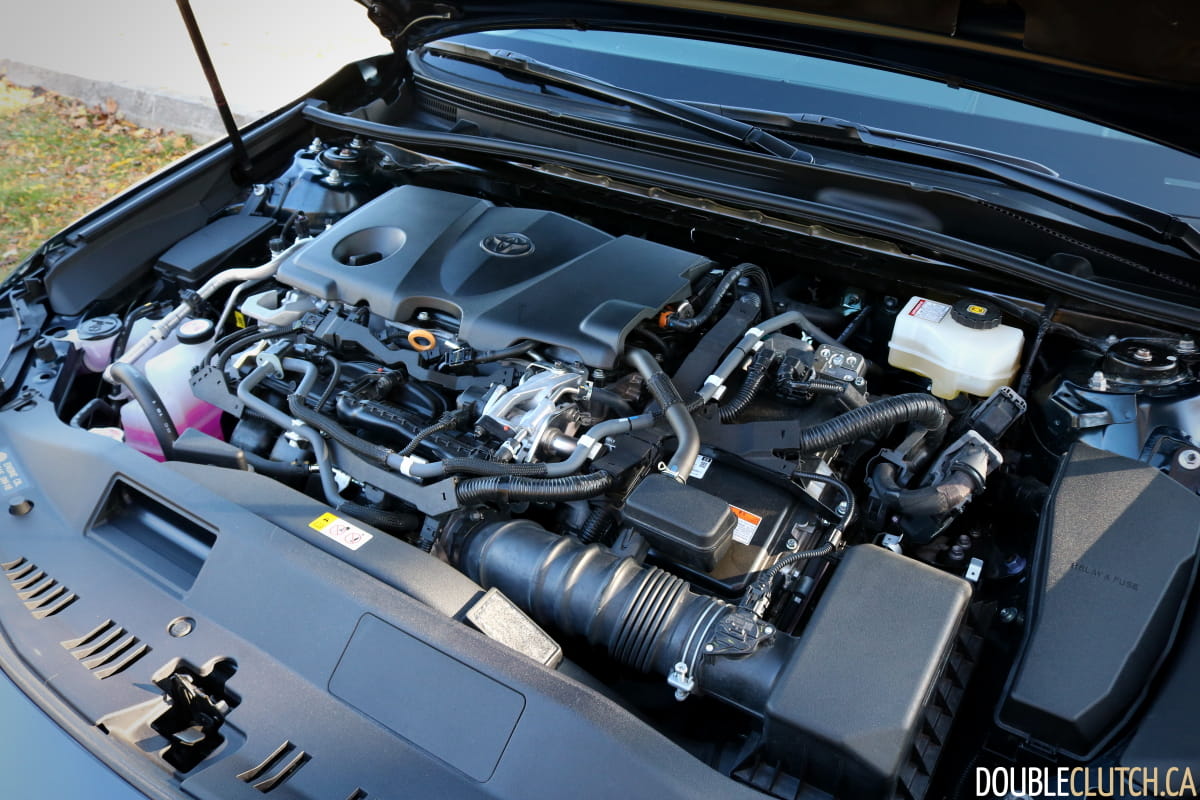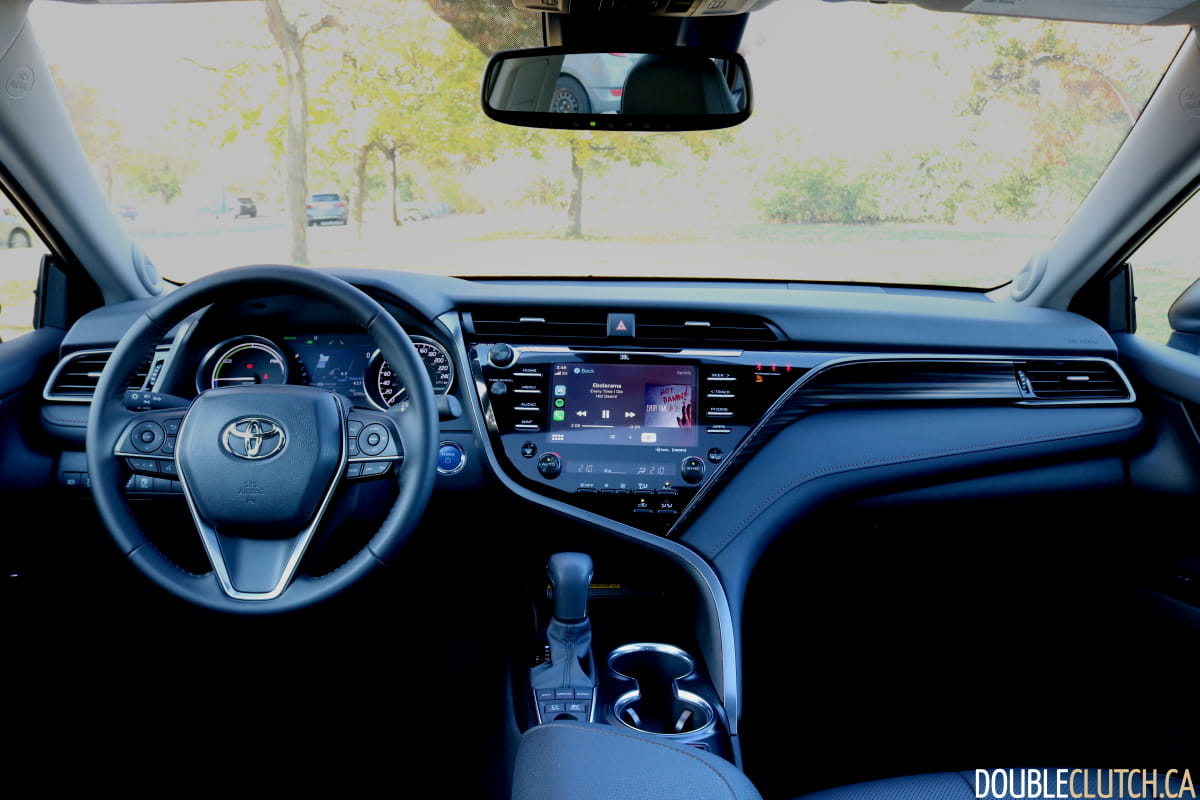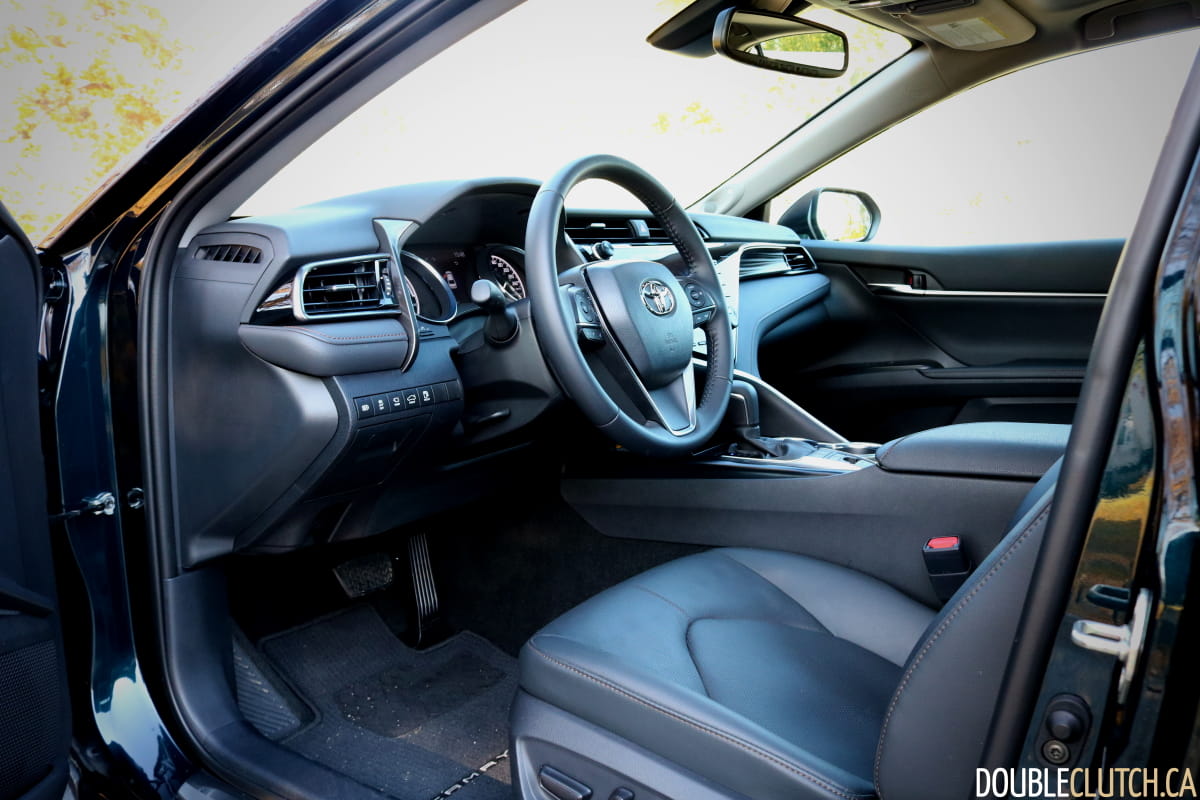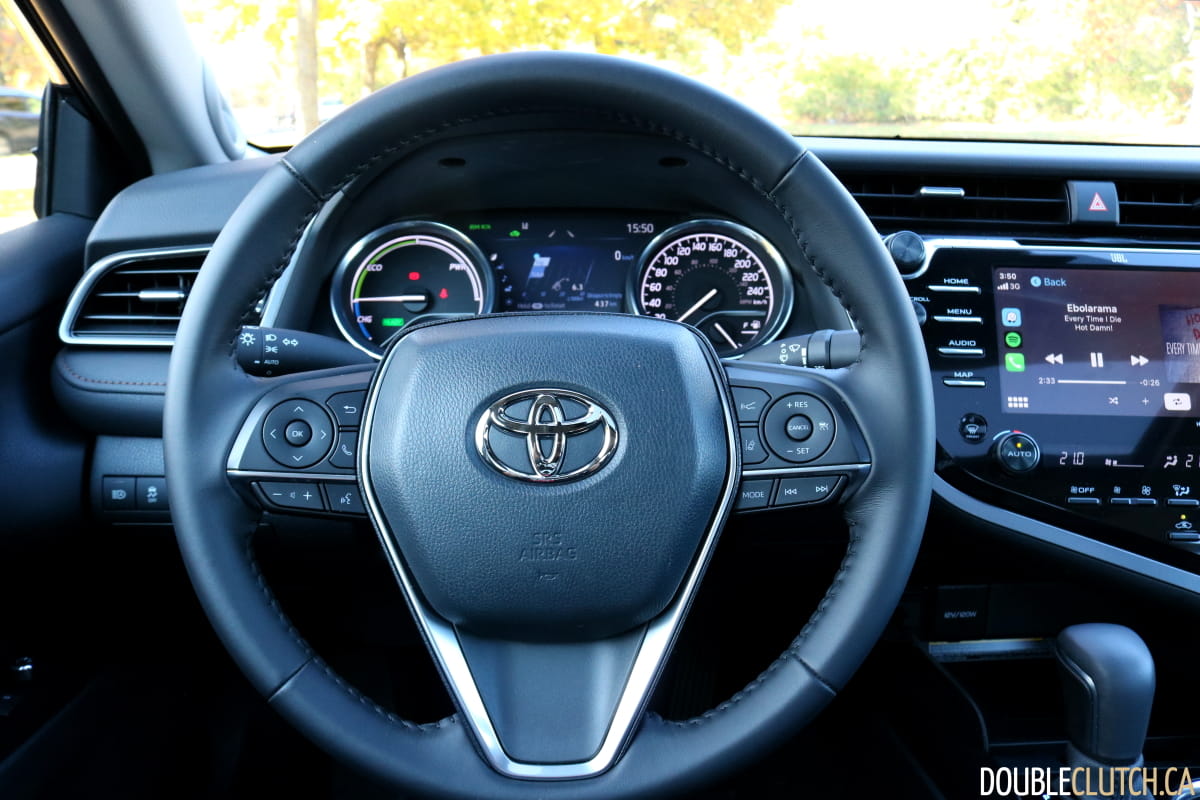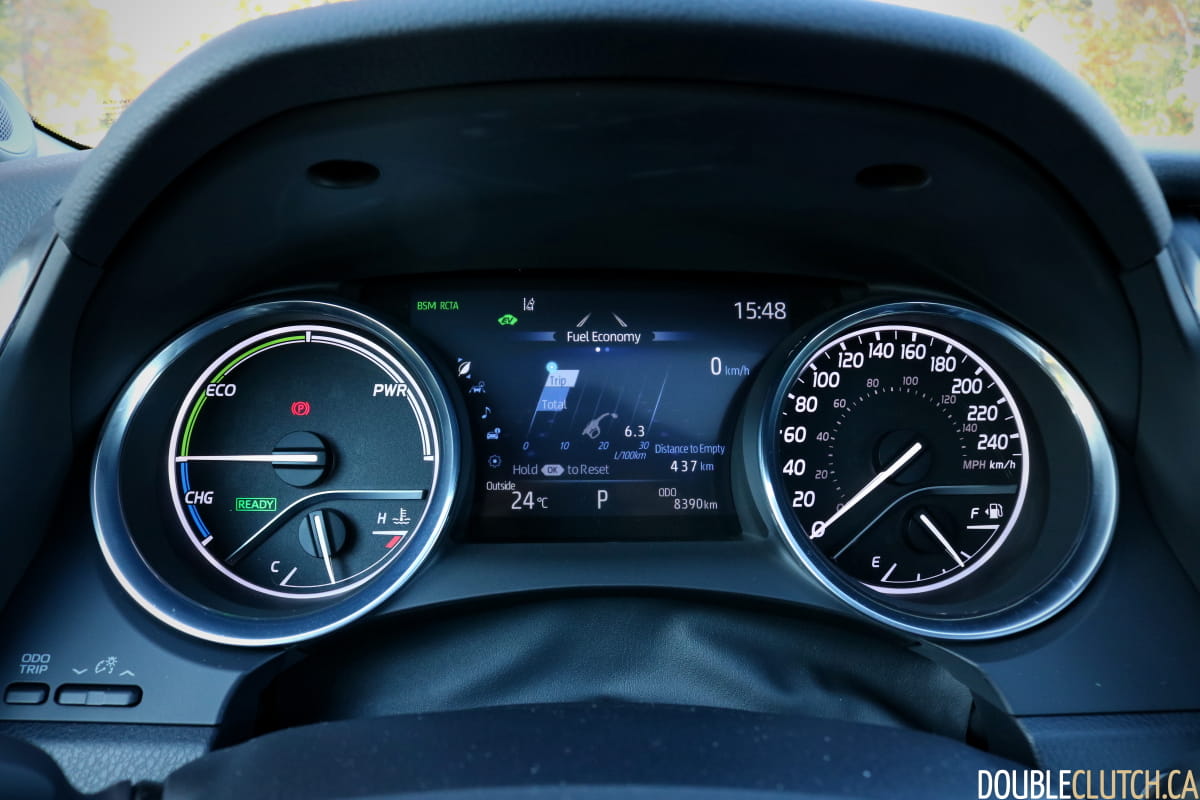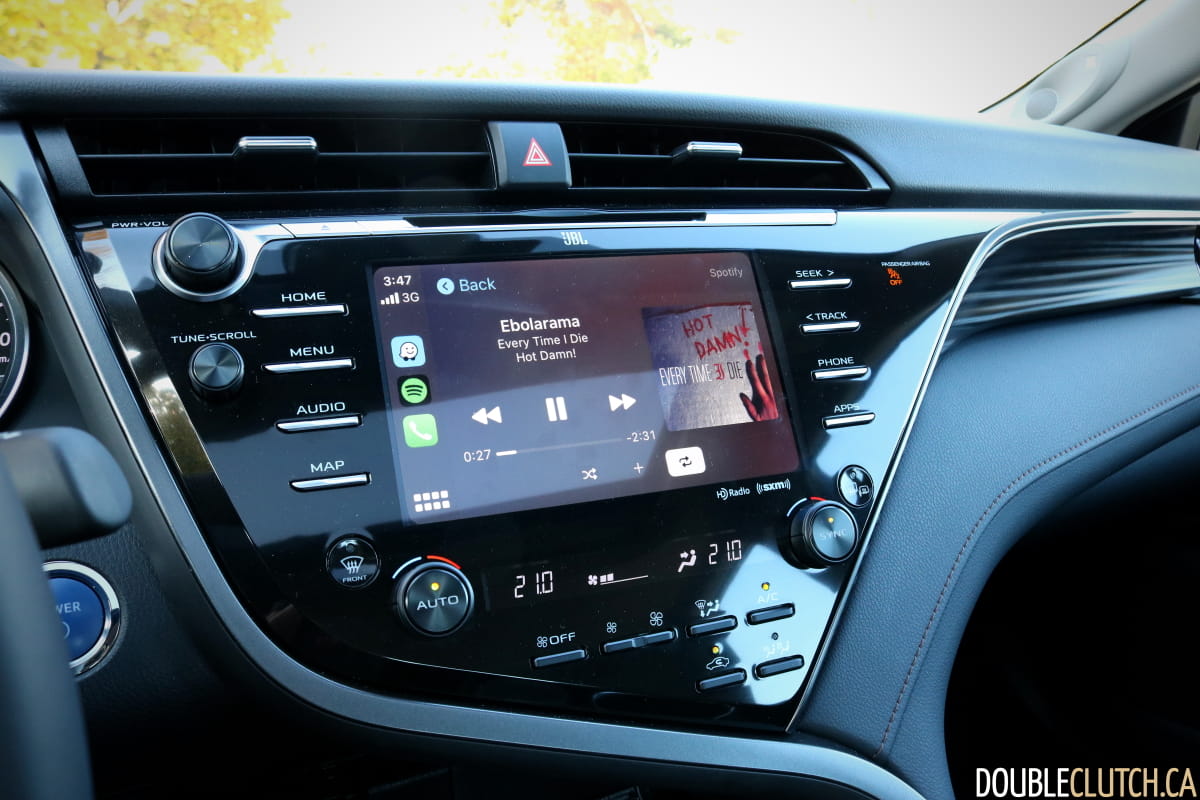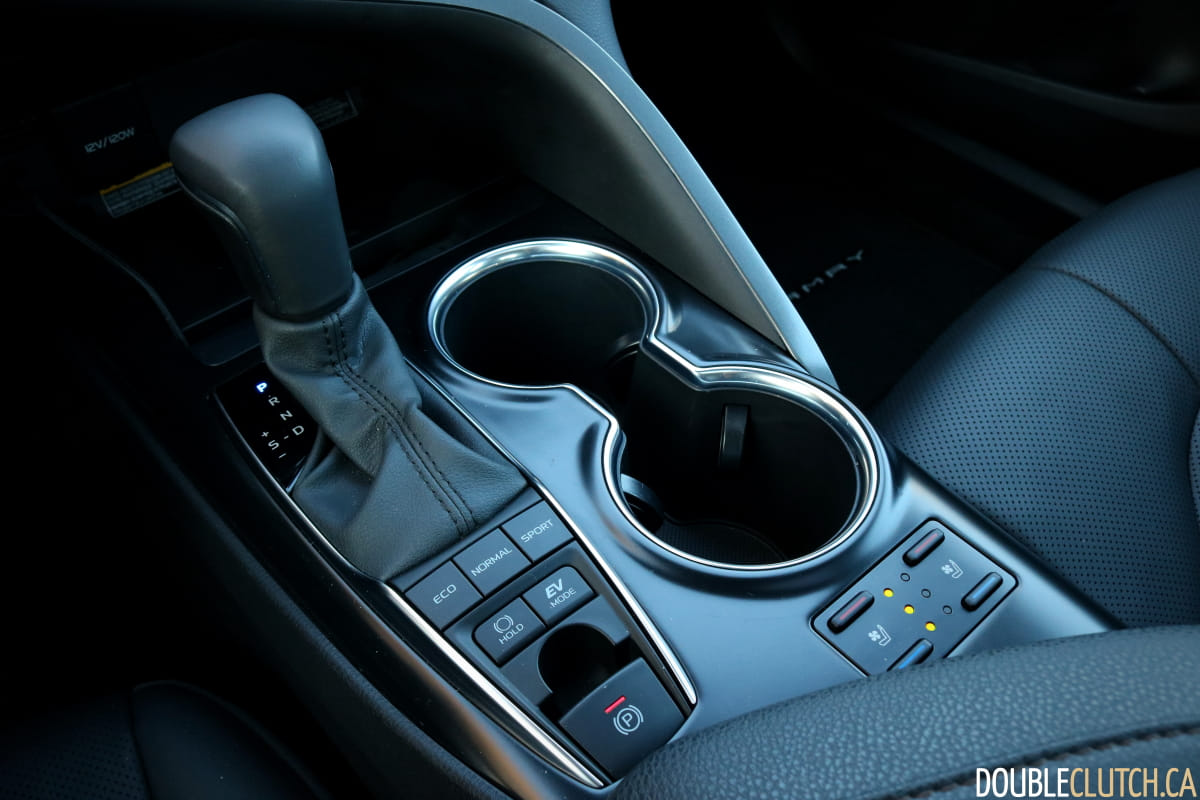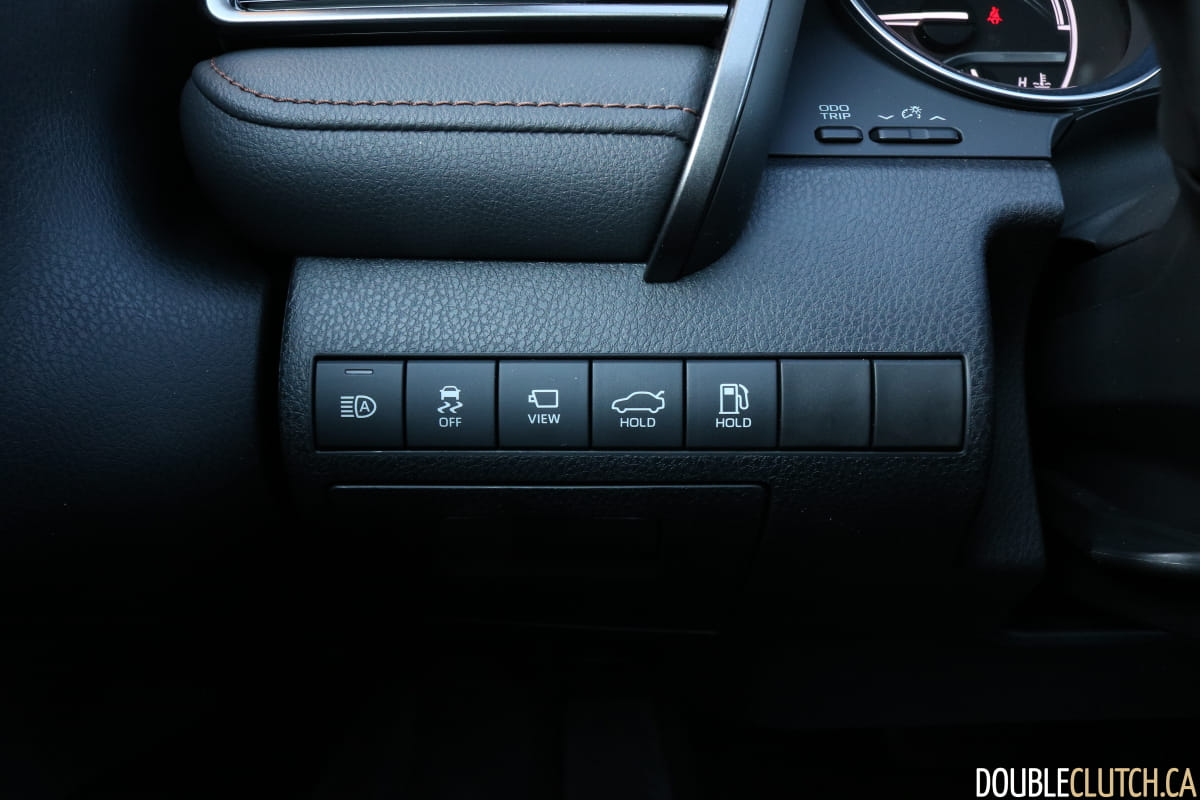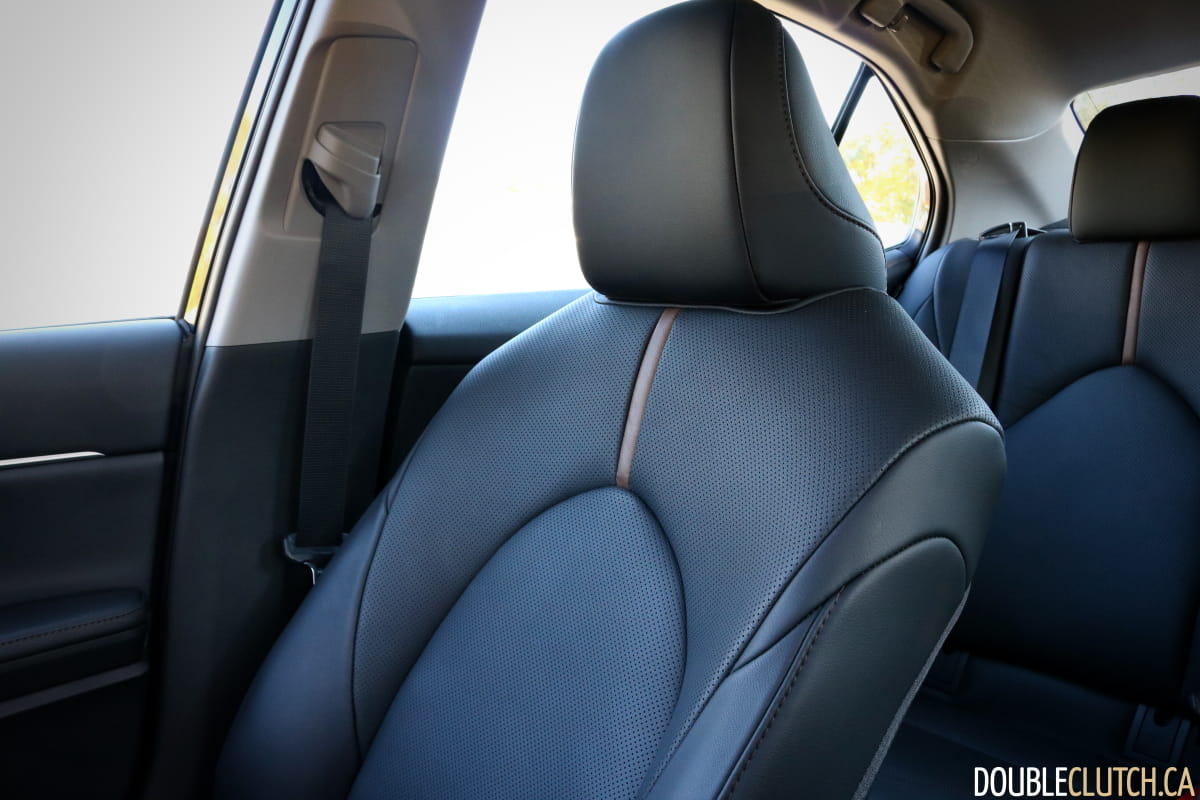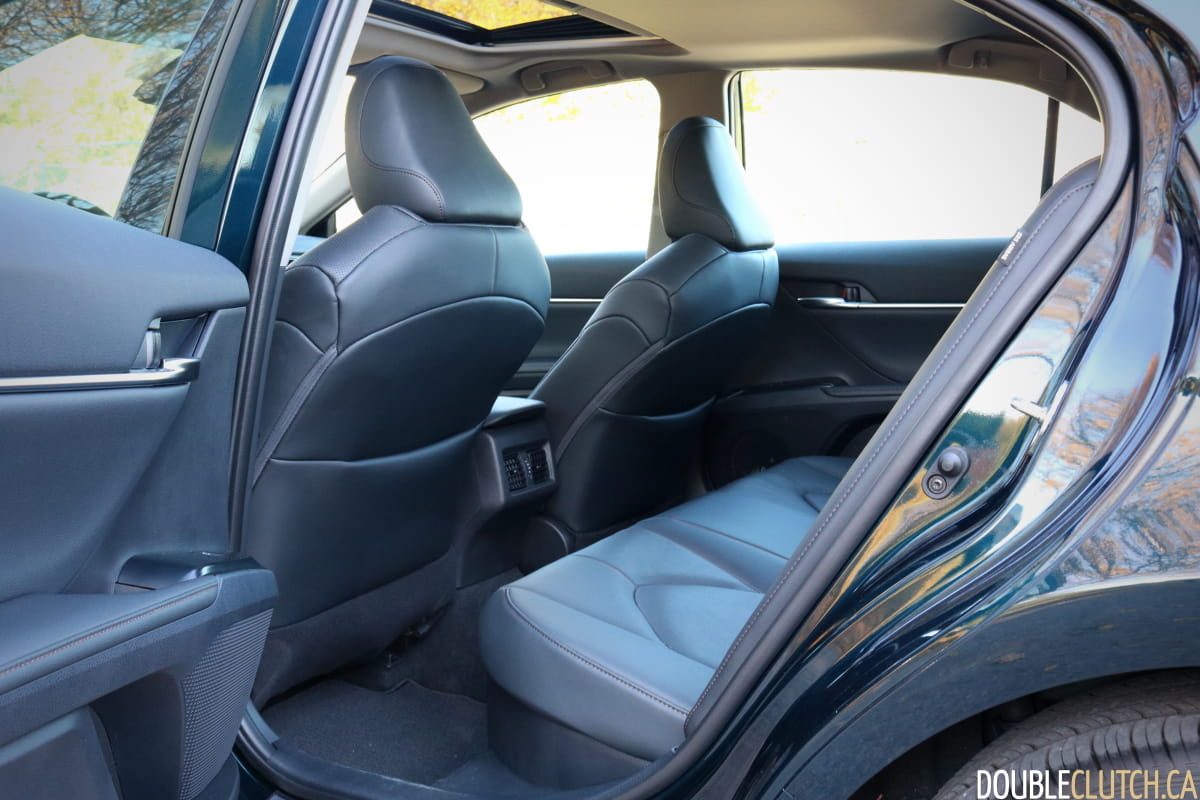It’s hard to believe that Toyota has been offering the Camry with a hybrid powertrain for almost fifteen years. Since the first Camry Hybrid was introduced at the 2006 North American International Autoshow, cars have become safer, more efficient, more and technologically connected. Are the reports of the death of the sedan greatly exaggerated? We tested the 2020 Toyota Camry Hybrid XLE to find out.
Toyota did a good job of accentuating the glamour of a sedan by drawing up a longer, lower silhouette than on the previous Camry. Up front, slim lighting units sit above a large, trapezoidal lower grille. Along the side, the main character line starts at the front fender and continues onto the rear fender, greatly enhancing visual length. Out back, slim lighting continues while the license plate set into the trunk lid contributes to a lower look. This XLE trim rolls on 18-inch wheels that do a good job of filling out the arches.
Things are a bit of a mixed bag inside the Camry Hybrid. Toyota knows it’s a mainstream product, so a great deal of attention has been paid to the interior controls. The shifter is entirely conventional, not some shift-by-wire deal that involves a certain learning curve. Volume and tuning knobs are both present and both feel lovely, although it is a long reach to them because of how the Camry’s dashboard tilts away from the driver.
There’s plenty of leg and shoulder room in the rear seat and the trunk is significantly larger than on past Camry Hybrids. Better still, the rear seats fold down which hasn’t always been common among midsize hybrid sedans.
What’s more, the electronics inside are actually quite good. Apple CarPlay works smoothly on the Camry’s infotainment system and the screen between the gauges displays heaps of information from fuel economy to lane-keep assist to what song is currently playing. The background of the infotainment screen is also customizable with several skins that will play on customers’ individual tastes.
Climate control settings are displayed separately from the infotainment screen and don’t require any sub-menu hunting to manipulate, there are lights to indicate if rear passengers aren’t buckled in and Toyota’s steered clear of utilizing capacitive touch buttons which is a good thing, as physical buttons are easier to use whilst on the move. Also really good is the JBL premium audio system; It offers good clarity and great staging for the segment.
That being said, things aren’t all rosy on the inside. The first mark against the Camry Hybrid’s interior is the giant slab of glossy black plastic across the dashboard that’s prone to collecting fingerprints and fine scratches. It does do a great job of smoothing out the look of the climate control display but it’s annoying for those who enjoy having a clean interior.
Slightly annoying are the Camry Hybrid’s uncomfortable front seats. While leather-clad, heated and ventilated in this XLE model, upper back support is quite poor and the headrest juts forwards at a sharp angle, pushing the driver’s head forward into a craning position. Not brilliant for longer journeys. Moving to the rear seats, they have basically the opposite problem from the front seats. Actual seat comfort is very good but headroom is quite tight, likely unsuitable for passengers over six feet tall.
Even tighter than the headroom is the foot room. Toyota’s proudly lowered the hip point of the current Camry over the previous model so that the driver sits lower in the car, but the bulkiness of the front seats results in a lack of space for shoes to go under them. Another minor annoyance is the lack of a heated steering wheel on this loaded XLE model, although that will be rectified for the 2021 model year so we’ll give Toyota a pass on this one.
In a marked departure from Toyota tradition, build quality isn’t the Camry’s strong suit. The doors close with the performative hollowness of a tele-prompted network television talking head, the driver’s door armrest squeaks when any weight is on it. The driver’s door seal on our test car wasn’t doing a great job of sealing, allowing the wind to hiss at freeway speeds. While it’s entirely possible that our test car was built at end-of-shift on a Friday, it’s still worth mentioning as many long-time Toyota customers are used to a hewn-from-granite feel.
Driving the Toyota Camry Hybrid is as norm-core of an experience as eating oatmeal or wearing jeans. The steering is light and numb, changing direction without any sense of communication. The suspension is soft and glides over imperfections well, insulating occupants from the road in true Camry tradition. Road noise is kept to a hushed minimum and wind noise around body fixtures like the mirrors is cleverly reduced by the use of little vortex generators that deflect air around potential noise spots.
With focus on comfort and noise-reduction, it may be surprising to learn that driving the Camry Hybrid isn’t an entirely disconnected driving experience. Thanks to Toyota’s stiff TNGA structure and the Camry’s low centre of gravity, the Camry Hybrid is more manoeuvrable and confident than a crossover could ever hope to be.
Power for the Camry Hybrid comes courtesy of a 2.5-litre four-cylinder engine and a 259-volt lithium-ion battery pack with a combined output of 208 horsepower and 163 lb-ft. of torque which is perfectly sufficient. Mated to a CVT, it’s the traditional blueprint for a hybrid powertrain. The weird part is that it rarely ever feels like a hybrid. Oh sure, the gasoline engine doesn’t actually start as soon as the car is started and it does deploy minor regenerative braking while coasting, but for the most part it just feels like a traditional gasoline-powered car. In fact when the gasoline engine is called upon, it often kicks in with imperceptible smoothness.
This makes the Camry Hybrid extremely palatable to people who have never owned a hybrid car before, as it’s an extremely familiar experience with the perk of great fuel economy. We averaged 6.4L/100km in nearly exclusively highway driving, an excellent figure considering hybrids typically excel at fuel economy in city conditions and altering driving habits for the purpose of good fuel economy was at no point attempted during our testing period.
In the end, the Camry Hybrid doesn’t live up to Akio Toyoda’s “no more boring cars” mission statement, but that helps it be both a fairly good Camry and a fairly good hybrid. It’s big, efficient, reasonably conservative and perfectly fine, but it won’t elicit desire. And that’s okay. For a lot of people, desire takes a back seat to practicality, efficiency and value. And while a Hyundai Sonata Hybrid (reviewed here) is a better way to spend $40,000 than a Camry Hybrid XLE is, that Sonata Hybrid is only available in one loaded trim level.
The base Camry Hybrid LE starts at $31,550, $3,460 more than a regular gas-only Camry LE and packs some features from the $30,630 Camry LE Upgrade package which makes it better value than a loaded-up example.
For those seeking a more efficient form of family transport than a crossover, the 2020 Toyota Camry Hybrid XLE is a good blend of electrified efficiency with everyday familiarity should one be willing to look past the mediocre seats and slight feeling of tinniness.
See Also:
2020 Hyundai Sonata Hybrid Ultimate










